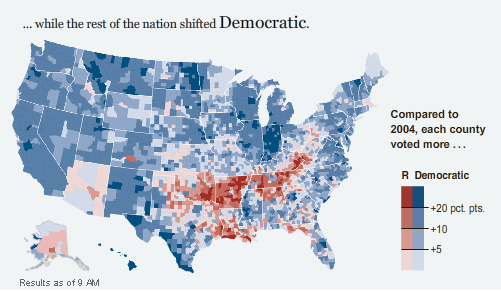The interest rates on US government debt has turned negative (again) as a result of the enormous flight to perceived safety. I guess they’ll be able to fund their gargantuan bailouts more easily, at least.
Brad DeLong has written a short and much celebrated essay (available on Cato and his own site) on the financial crisis and (consequently) why investors currently love government debt and hate everything else. I’ll add my voice to those suggesting that you read the whole thing. Here is the crux of it:
[T]he wealth of global capital fluctuates … for five reasons:
- Savings and Investment: Savings that are transformed into investment add to the productive physical — and organizational, and technological, and intellectual — capital stock of the world. This is the first and in the long run the most important source of fluctuations — in this case, growth — in global capital wealth.
- News: Good and bad news about resource constraints, technological opportunities, and political arrangements raise or lower expectations of the cash that is going to flow to those with property and contract rights to the fruits of capital in the future. Such news drives changes in expectations that are a second source of fluctuations in global capital wealth.
- Default Discount: Not all the deeds and contracts will turn out to be worth what they promise or indeed even the paper that they are written on. Fluctuations in the degree to which future payments will fall short of present commitments are a third source of fluctuations in global capital wealth.
- Liquidity Discount: The cash flowing to capital arrives in the present rather than the future, and people prefer — to varying degrees at different times — the bird in the hand to the one in the bush that will arrive in hand next year. Fluctuations in this liquidity discount are yet a fourth source of fluctuations in global capital wealth.
- Risk Discount: Even holding constant the expected value and the date at which the cash will arrive, people prefer certainty to uncertainty. A risky cash flow with both upside and downside is worth less than a certain cash flow by an amount that depends on global risk tolerance. Fluctuations in global risk tolerance are the fifth and final source of fluctuations in global capital wealth.
In the past two years the wealth that is the global capital stock has fallen in value from $80 trillion to $60 trillion. Savings has not fallen through the floor. We have had little or no bad news about resource constraints, technological opportunities, or political arrangements. Thus (1) and (2) have not been operating. The action has all been in (3), (4), and (5).
As far as (3) is concerned, the recognition that a lot of people are not going to pay their mortgages and thus that a lot of holders of CDOs, MBSs, and counterparties, creditors, and shareholders of financial institutions with mortgage-related assets has increased the default discount by $2 trillion. And the fact that the financial crisis has brought on a recession has further increased the default discount — bond coupons that won’t be paid and stock dividends that won’t live up to firm promises — by a further $4 trillion. So we have a $6 trillion increase in the magnitude of (3) the default discount. The problem is that we have a $20 trillion decline in market values.
Some people have criticised Brad for his characterisation of the liquidity discount, suggesting that he has confused it with the (pure) rate of time preference. I don’t think he is confused. Firstly because he’s a genuine expert in the field and if he’s confused, we’re in big trouble; and secondly because the two concepts are interlinked.
The liquidity discount is that an inability to readily buy or sell an asset – typically evidenced by low trading volumes and a large bid/ask spread – reduces it’s value.
The pure rate of time preference is a measure of impatience. $1 today is preferred over $1 tomorrow even if there is no inflation. [Update: see below]
The two are linked because if you want to sell assets in an illiquid market, you can either sell them at a huge discount immediately or sell them gradually over time. The liquidity discount is (presumably) therefore a monotonically increasing function of the pure rate of time preference for a given level of liquidity.
Minor update:
A more correct illustration of the pure rate of time preference would be to say:
Suppose that you could get a guaranteed (i.e. risk-free) annual rate of return of 4% and there is no inflation. A positive pure rate of time preference says that $1 today is preferred over $1.04 in a year’s time.




